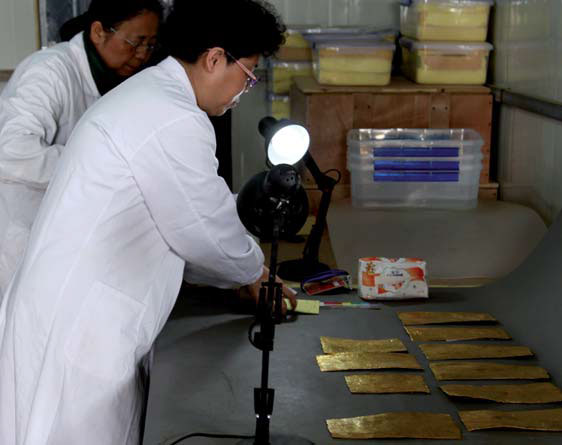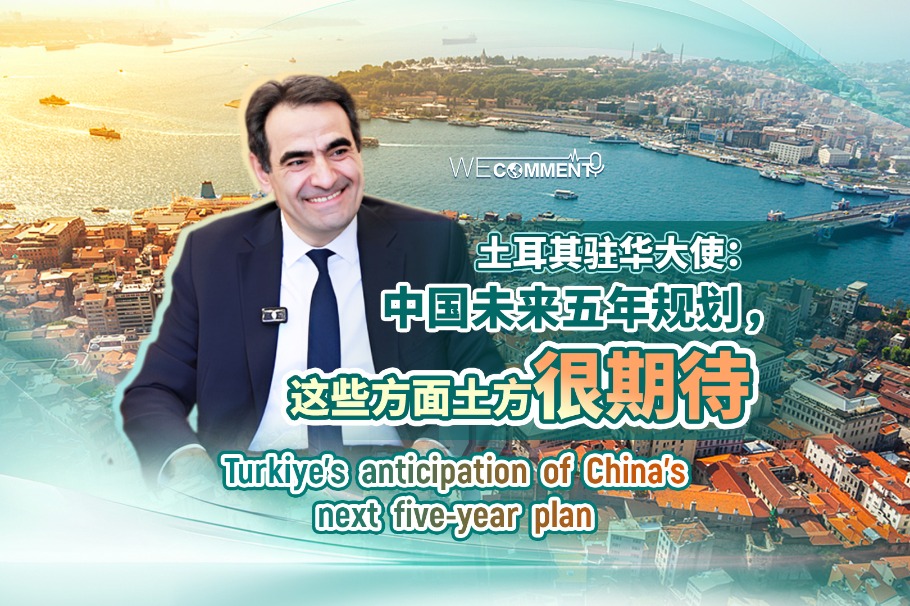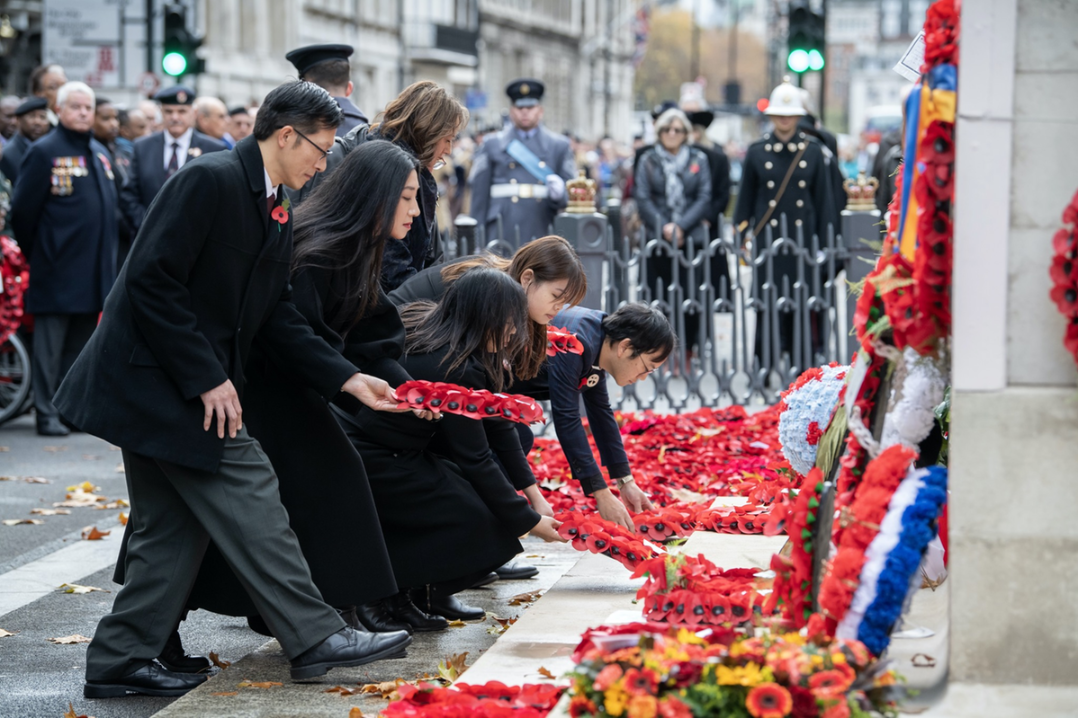Site to get theme park, museum

A theme park and an archaeological museum are expected to break ground in 2016 at the site of the ongoing Marquis Haihun tomb excavation and research center, the top archaeologist of Jiangxi province said on Dec 29.
Xu Changqing, director of the Jiangxi provincial Archaeological Research Institute, says provincial and central government authorities are eager to bring the plan to fruition as part of what he called "open archaeology".
"In my opinion, the essence of archaeology is to explain archaeological findings and cultural relics to the general public in a plain and pristine manner, rather than turning such precious findings and treasures into a catalog of hard-to-digest research essays," Xu says.
| Archaeologists examine gold plates found at the tomb excavation site. Lei Xiaoxun / China Daily |

In contrast to previous archaeological excavations in China, journalists, photographers and documentary makers from Chinese media have been granted permission to immediately report on the final but most exciting phase of new discoveries at the Marquis Haihun site from the Western Han Dynasty (206 BC-AD 24).
Xu says that although some experts might question such an open and timely flow of important archaeological information because it might lead to inaccurate theories and conclusions, he believes the importance of quenching people's thirst for such information outweighs academic needs. "This should be the key focus of archaeologists," he says.
Everyone from new fans to the nearby village's pork peddlers can easily access the latest developments from the tomb excavation site by watching TV, reading a newspaper, listening to the radio or even glancing at the Moments section on WeChat, the instant-messaging application of Tencent.
Talk of Haihun Hou, or Marquis Haihun, believed to be the tomb's main occupant, is basically everywhere, and his name has become a buzzword in the real world as well as in cyberspace. When the name is entered in the search engine Baidu.com, netizens will find around 545,000 results.
"Open, transparent and live updates (on the tomb excavation) generated genuine archaeological interest among ordinary people, and we are glad to see that," Xu says.
As cultural relics are found, "archaeologists should tell the stories behind such objects in a lively and understandable manner", he adds.
Jiangxi, rich in cultural and archaeological resources, has been generous to Xu. In 1989, 480 extremely delicate bronze ware items with decorative patterns such as a Taotie (a ferocious, mythical beast) design dating back to the Shang Dynasty (c. 16th century-11th century BC) were excavated from a burial site in Dayangzhou, Jiangxi.
Soon after this excavation, Xu, just after graduating from Xiamen University in Fujian province, rose to fame in China's archaeology community.
"I stood among the 'amazing' bronze wares and burst into tears", he recalls.
He is even more excited this time because, he says, the tomb is "complete in its format, massive in its treasures and high-profile in the royal funerary ranking".
"The surprisingly large amount of gilded bronze ware and lacquer artifacts with gold and silver decoration has broadened our horizons on how sophisticated the Western Han techniques were", says Xu, who chaired the archaeological excavation of the Lizhouao Eastern Zhou (770-256 BC) Tomb in Jiangxi's Jingan. The tomb was named one of the Top 10 archaeological discoveries of 2007 by the State Administration of Cultural Heritage.
"The bronze and iron musical instruments, such as bianzhong (bronze chime), also demonstrated superb craftsmanship of that dynasty," he adds.
Xu says he is confident that the excavation and research on the Marquis Haihun tomb will leave quite an impression on Chinese archaeological history.
"This is only the beginning", he said.
(China Daily European Weekly 01/01/2016 page25)
Today's Top News
- New engine powers cargo drone expansion
- China to boost intl cooperation on green tech
- Factory activity sees marginal improvement in November
- Venezuela slams US' 'colonial threat' on its airspace
- Xi: Strengthen cyberspace governance framework
- Takaichi must stop rubbing salt in wounds, retract Taiwan remarks































